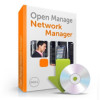Dell PowerConnect OpenManage Network Manager Web Client Guide 5.0 - Page 34
Search Indexes, [My Account], My s, Contacts Center
 |
View all Dell PowerConnect OpenManage Network Manager manuals
Add to My Manuals
Save this manual to your list of manuals |
Page 34 highlights
Tips describing these screens and fields appear when you hover the cursor over fields, or click the blue circle around a question mark next to them. This blue circle can also toggle the appearance / disappearance of the tip. Users with less-than-Administrator permissions may not see all of the features described in this guide. Search Indexes Sometimes Dell OpenManage Network Manager may display Control Panel objects like users, roles, and organizations inaccurately. This occurs because search Indexes need to be re-indexed every so often, especially when changes to roles, users and organizations are frequent. To re-index go to Control Panel > Server Administration and then click on the Reindex all search indexes. This takes little time. [My Account] To configure information for your login, look for the bar titled with your account login's name. It has the following lines beneath it: My Account-This configures your information as a user, including your e-mail address, password, and so on. My Pages-This manages public and private pages visible to you as a user. Use the tree of pages that appears on the left of this screen to drag and drop pages in the order you want. Notice that you can also configure the look and feel, the logo that appears and other settings with the editor screens on the right. Contacts Center-This configures contacts, in other words, people within your system that you are following. Click the Find People link to see a list of potential contacts within your system. You must click Action > Follow to see them listed in the Contacts Home. Use the Action button to explore other possibilities. The contact has to approve you in their requests. To Follow means you want to receive the followed person's activity stream, blog postings, and so on. Friending means your friends can see your activity and you can see theirs. They have to accept any Friend request. Tip You can export vCards for all contacts in the system to use with other software that uses contacts. For example: e-mail clients. 34 Control Panel | Getting Started with Dell OpenManage Network Manager















